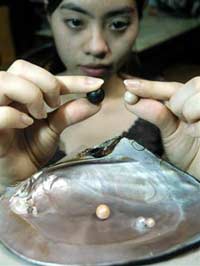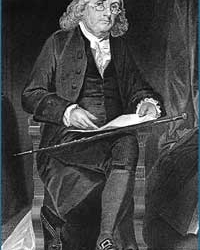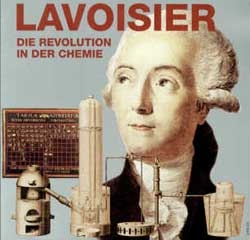 |
|
Black pearls and various types of white pearls cultivated by Mr. Tran Doan Thien – Photo: T.T.D. |
In recent years, pearls with vibrant colors—deep and light pink, silver white, dark green, bronze, cream, and blue—have become popular in the market. Among them, black pearls remain the most precious. However, only marine oysters have the ability to produce black pearls. Yet, in Ho Chi Minh City, a retired colonel has discovered a technology to create black pearls from freshwater oysters…
Mr. Tran Doan Thien currently resides in Tan Binh District, Ho Chi Minh City. He recounts that from 1949 to 1957, he worked with the border guards in Ha Tinh Province, which allowed him to interact with many fishermen. During one diving trip with friends to collect oysters for cooking, he accidentally found a beautiful, shiny white pearl.
Since then, the dream of cultivating pearls has haunted him. However, it wasn’t until 1985, after retiring, that he dedicated all his time to researching pearl cultivation.
He and some young friends dug ponds to raise oysters and practiced grafting pearl nuclei. “At that time, although it was very difficult and there was hardly any certainty, while we researched, raised oysters, and practiced grafting pearls… we had to eat instant noodles to survive. At one point, I had to sell my only motorcycle to cover expenses. People called us ‘crazy’… but we remained optimistic and believed that we could cultivate pearls…” – said Mr. Nguyen Quoc Thinh, currently the director of Lam Anh Company, specializing in pearl trade and production.
After many trials and tribulations in pearl-making, Mr. Thien’s group finally succeeded in grafting nuclei. The white pearls produced by his team became stable, well-defined, and could be sold on the market.
Mr. Thien recalls: “Once in France researching pearls, I saw beautiful black pearls, which were priced 4-5 times higher than white pearls of the same size.” After learning why there was such a price difference, he realized that black pearls are expensive because they are… rare. Upon returning to Vietnam, he dived into research to find a method for cultivating and producing black pearls.
He and his research team traveled to various coastal regions, from Phan Thiet to Kien Giang, to search for Pinctada maxima, Pinctada fucata, Pteria penguin, and other oysters with black edges. However, when grafting pearls onto the oysters, achieving black color remained impossible.
 |
| A black pearl the size of a longan seed, measuring 15mm, cultivated by Mr. Thien typically costs from $2,000 and up – Thu Thao |
One day, while lamenting to his wife, he suddenly noticed her shiny black teeth. He realized: teeth are also composed of calcium, and pearls have a similar composition, so it might be possible to alter the color of the pearls from the beginning of the cultivation process. The beauty of the pearl would depend on the oyster’s nacre, which would create uniform crystals.
Creating color in oysters is closely related to genetics and living conditions. Once again, after 10 years of relentless efforts, he succeeded in creating black pearls (black cultured pearls) from the Sinanodonta jourdyi species sourced from Lam Dong.
The food for raising oysters was also meticulously researched by him, made from a type of oak leaf (the same leaves used in ancient times to dye fabrics and black silk), combined with dried, finely ground fish scales from shiny fish like carp and goldfish, mixed into the feed to ensure the pearls formed with a glossy, beautiful finish. The time from grafting to harvest is two years, with a 13-14 mm black pearl priced between $1,000 and $2,000.
Upon hearing that Vietnam had successfully cultivated black pearls, many experts from Japan, France, Taiwan, and mainland China flocked to his home for tours. Everyone was amazed and admired the deep black pearls, and he received numerous business partnership offers amounting to millions of dollars… Yet, these same experts were once again surprised when he declined, stating that he could not collaborate because it was a “national secret.”
However, to fellow Vietnamese, he spoke sincerely: “I will guide anyone who is passionate and wishes to cultivate colored oysters without charging a single penny.” Indeed, for the past few years, he has helped many pearl farm owners in Ho Chi Minh City, Dong Nai, Lam Dong, Dak Lak, and Ben Tre.
As for the technology behind “black cultured pearls,” he mentioned that he would also pass on his skills to those he trusts. However, the chosen individuals must use the technology to enrich themselves and must not sell it abroad.
THU THAO





















































